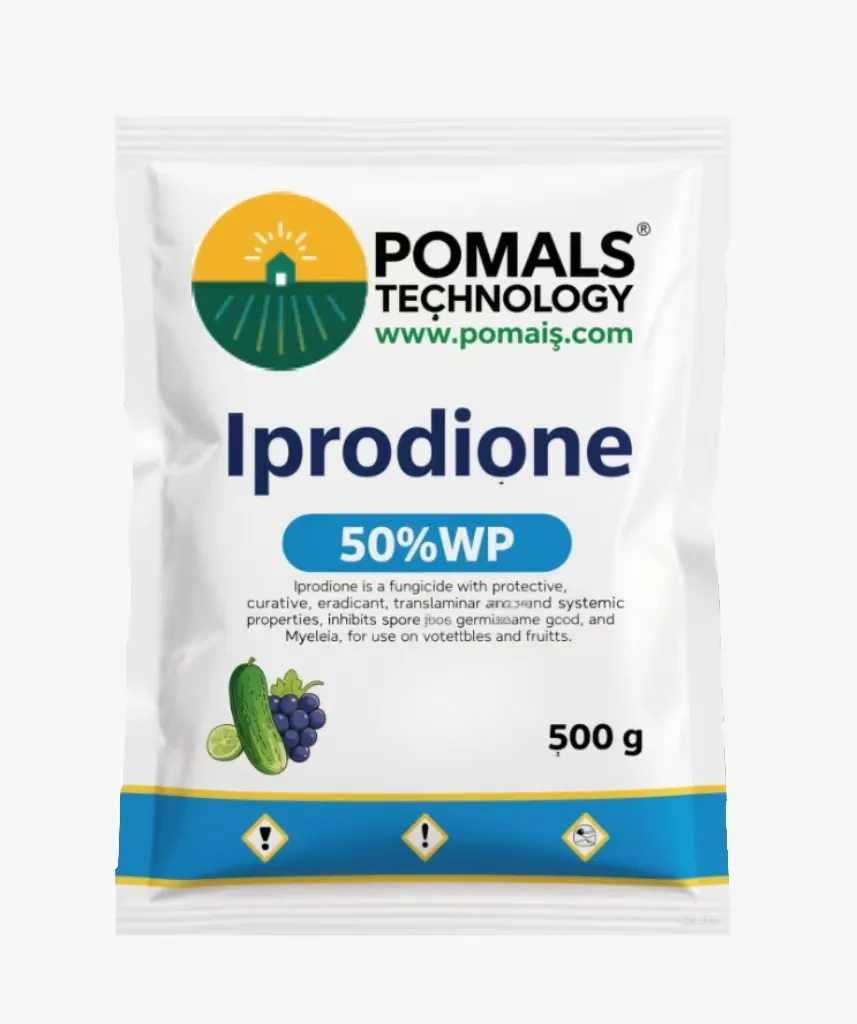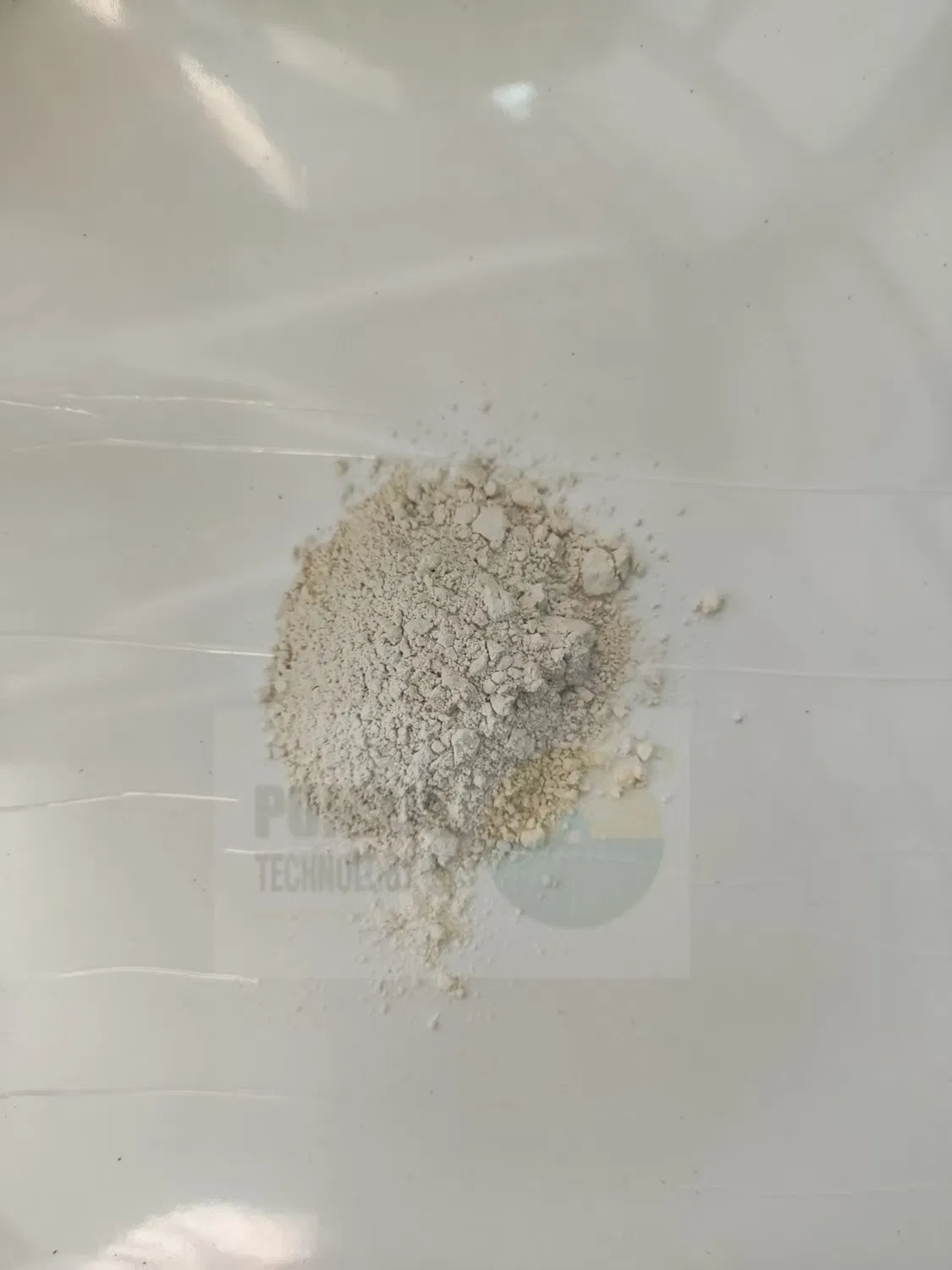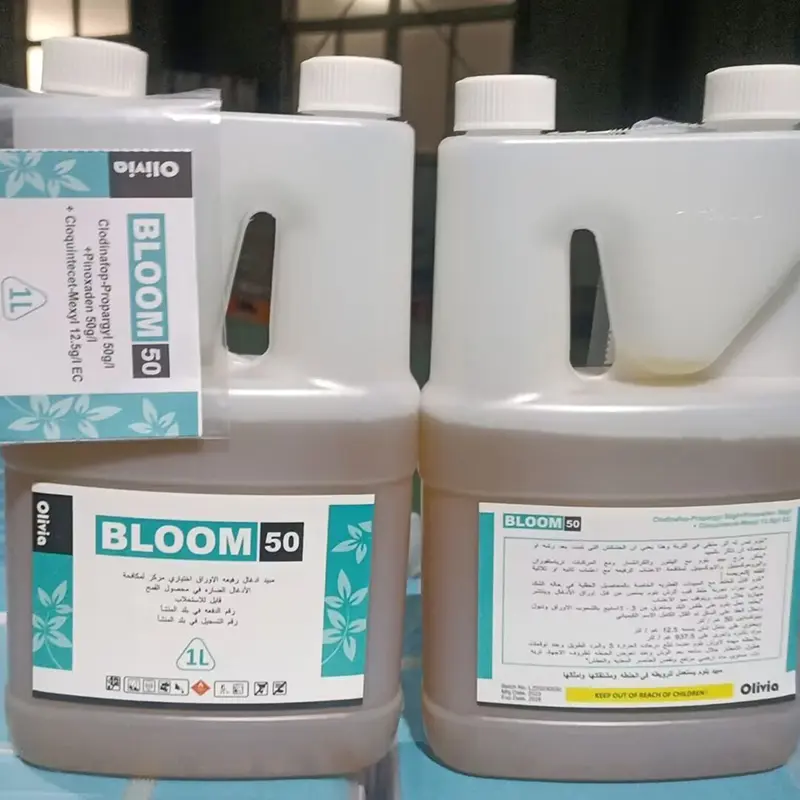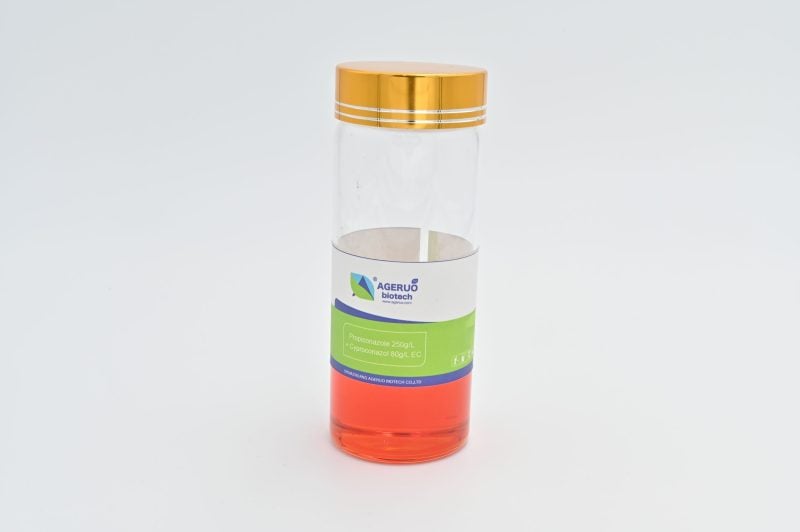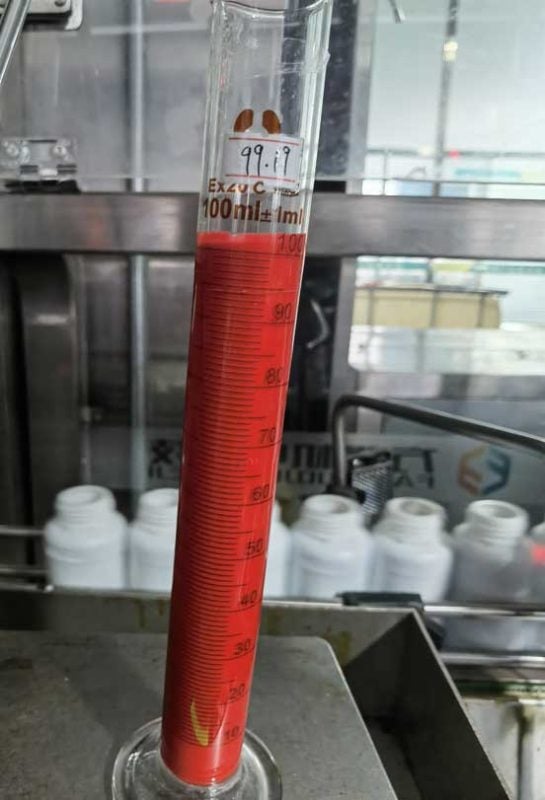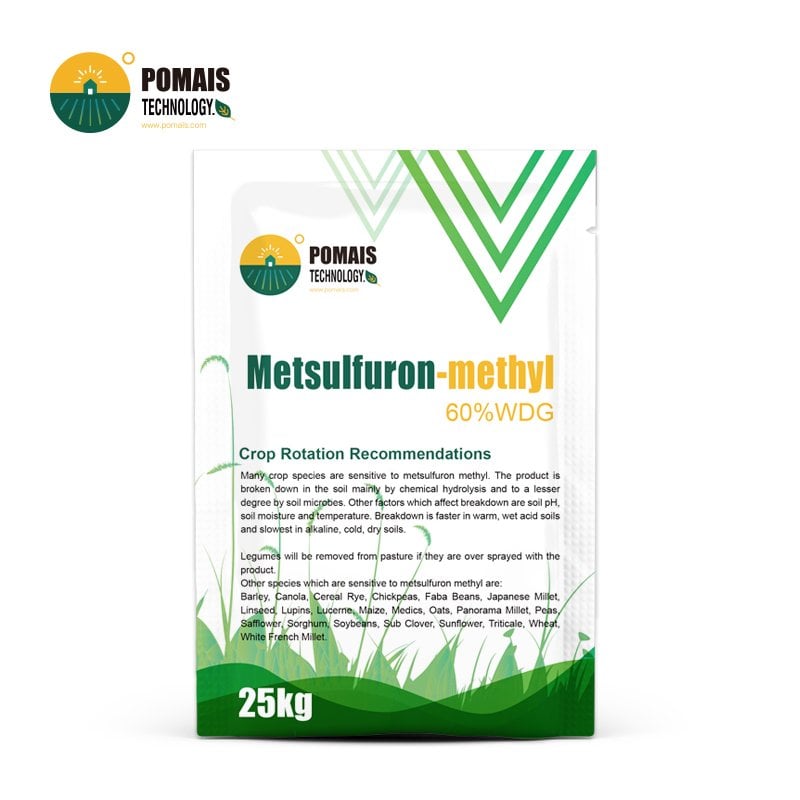Iprodione 50% WP | Dicarboximide Fungicide
You are sourcing Iprodione 50% WP, a professional contact/protectant fungicide (FRAC 2) for high-value fruit, vegetables, ornamentals, and turf where listed on the local label. You position it preventively or at first sign to protect quality during critical windows, leveraging a wettable powder engineered for fast wetting and stable suspension to maintain consistent spray performance across long shifts. The commercial value is straightforward: reliable coverage, clean deposits, and a clear rotation role—apply within label allowances, then move off FRAC 2 to manage resistance. All crops, pathogens, intervals, PHI/REI, mixing permissions, and protected-culture uses are label-dependent; trained personnel must follow the approved label, SDS, and site SOPs.
- Use case (label-dependent): Botrytis, Sclerotinia, Monilinia, Rhizoctonia and other listed diseases in fruit/veg/ornamentals/turf
- Program fit: preventive → early curative; rotate away from FRAC 2
- Formulation benefit: quick wetting, stable suspension, controlled dust for cleaner induction
- Compliance & docs: professional use only; COA / SDS / TDS supplied per lot; OEM labels/packs available
- Designed for Professional Buyers & Bulk Orders
- This product is available for business purchase and large-scale distribution.
- We support custom packaging, labeling, and formulation to meet your market needs.
- Let’s build your brand together.

About Iprodione 50% WP | Dicarboximide Fungicide
About Iprodione 50% WP | Dicarboximide Fungicide
| Item | Specification |
|---|---|
| Product | Iprodione 50% WP |
| Active / Content | Iprodione 50% (w/w) |
| Class / FRAC | Dicarboximide fungicide — FRAC 2 |
| Formulation | WP (wettable powder) engineered for fast wetting & stable suspension |
| Positioning | Contact/protectant, preventive → early curative (label-dependent) |
| Identifier | CAS 36734-19-7 |
| Appearance | Free-flowing powder; controlled dust for cleaner induction |
| Packaging | 1 kg / 5 kg / 10 kg / 25 kg (market-dependent) |
| Documents | COA / SDS / TDS supplied per lot |
| Compliance | Professional use only. Use only as per the approved local label. |
What Iprodione 50% WP Is
Iprodione 50% WP is a single-SKU wettable powder formulation of a dicarboximide fungicide (FRAC 2) designed for professional programs that protect crop quality at critical windows. You use it as a contact/protectant—positioned preventively or at first sign—to intercept early infection steps where coverage and deposit integrity drive outcomes. The WP platform is engineered for fast wetting and stable suspension so your crews achieve uniform slurries, predictable spray quality, and clean deposits across blossoms, calyx, dense foliage, and turf canopies. Operationally, it fits into rotations that move off FRAC 2 in accordance with stewardship rules, while non-chemical practices (sanitation, debris removal, canopy climate discipline) stay in place to amplify results. This is not a systemic or long-residual tool; performance depends on timely placement, spray quality, and compliance with the approved local label. Each lot ships buyer-ready with COA / SDS / TDS for QA release and audit trails. Final crops, pathogens, intervals, PHI/REI, mixing permissions, and protected-culture use are label-dependent. Use only as per the approved local label, with trained personnel, PPE, and SOP/SDS alignment.
Mode of Action & Resistance Management (FRAC 2)
Iprodione 50% WP is a FRAC 2 dicarboximide with contact/protectant positioning. It acts at early infection events (spore germination, germ-tube development, superficial mycelium), so coverage and deposit quality determine outcomes. You deploy it preventively or at first sign, then rotate away from FRAC 2; only consider mixtures where permitted by the approved local label and keep non-chemical sanitation and climate controls active.
Mode of action & performance drivers. As a contact/protectant fungicide, Iprodione 50% WP provides activity on the plant surface with limited movement in tissue. Performance is driven by fast wetting, stable suspension, and uniform droplet spectra that build even deposits on blossoms, calyx, dense foliage, and turf canopies. Because it targets early pathogen stages, timing and coverage—not persistence—are your primary levers.
Resistance stewardship (must-dos). Build rotations that move off FRAC 2, avoid back-to-back sequences, and use partners only if the label allows. In Botrytis or other high-risk pathosystems, shorten the FRAC-2 exposure window across the critical period. Keep sanitation (debris removal, pruning hygiene), micro-climate management, and irrigation discipline in the program so each exposure carries more weight.
Operational discipline. Calibrate induction, agitation, and filtration to maintain slurry homogeneity during long shifts; verify coverage on difficult targets without exceeding label directions. Maintain block-level records (lot codes, intervals, growth stage, partners, weather) to support audits. All crops, pathogens, intervals, PHI/REI, mixing permissions, and greenhouse/open-field uses are label-dependent. Use only as per the approved local label, with trained personnel and PPE per SDS/SOP.
Use Scenarios (label-dependent)
You deploy Iprodione 50% WP preventively or at first sign in label-listed fruit & vines, vegetables, ornamentals/nursery, and turf to protect finish and pack-out quality. Rotate away from FRAC 2 as your label permits.
Fruit & Vines
- Windows: bloom → pre-bunch closure → pre-harvest quality holds.
- Targets (label-dependent): Botrytis, brown rot and listed blossom/fruit rots.
- Operational focus: even deposits on blossoms/calyx/cluster interiors; integrate canopy thinning, debris removal, and airflow.
- Stewardship: preventive/first sign; rotate away from FRAC 2; partners only if the approved local label allows.
Vegetables
- Windows: canopy closure; late-season quality phases (open field or greenhouse where permitted).
- Targets (label-dependent): Sclerotinia/Botrytis complexes and listed leaf/fruit rots.
- Operational focus: spray quality on dense foliage, irrigation discipline to reduce leaf-wetness duration.
- Stewardship: shorten FRAC 2 exposure in high-risk crops/regions; document intervals and partners.
Ornamentals & Nursery
- Windows: humidity-prone houses and finishing stages where bloom/leaf quality drives sell-through.
- Targets (label-dependent): listed foliar/blossom pathogens in susceptible species.
- Operational focus: sanitation between turns, spacing and airflow to limit inoculum; verify coverage on delicate tissues.
- Stewardship: label-driven permissions for protected structures; trained personnel and PPE per SDS/SOP.
Turf
- Windows: intensively managed surfaces during disease-conducive periods.
- Targets (label-dependent): Rhizoctonia and listed patch diseases.
- Operational focus: uniform droplet spectra and overlap across passes; calibrate agitation/filtration for long runs.
- Stewardship: rotation away from FRAC 2 per program rules; maintain surface logs for audit.
All crops, pathogens, timings, intervals, PHI/REI, protected vs open-field permissions, and mixing policies are label-dependent. Use only as per the approved local label, with trained personnel and PPE per SDS/SOP.
Formulation & Handling (WP)
You run Iprodione 50% WP as a fast-wetting, stable-suspension wettable powder that builds uniform slurries, protects nozzles, and keeps spray quality consistent across long shifts—use only as per the approved local label.
Wetting & dispersion
- Formulated for rapid wetting and quick break into a uniform slurry, reducing induction time and batch-to-batch variability.
- Controls dust at load-in to improve operator hygiene and measurement accuracy.
Suspension & agitation
- Maintains stable suspension under standard agitation; brief recirculation restores homogeneity after short holds.
- Particle-size distribution is tuned to limit sieve residue and support consistent patterns.
Induction & filtration discipline
- Use dedicated induction hoppers; avoid dry bridging by keeping a steady liquid vortex.
- Fit appropriate strainers/filters per your SOP to protect nozzles on long runs; verify mesh size against your equipment guide.
Spray quality & deposition
- Target uniform droplet spectra for even deposits on blossoms, calyx, dense foliage, and turf canopies.
- Calibrate pumps and meters; track pressure and flow to prevent drift-prone fines or under-coverage.
Water quality & partners
- Start with clean water; confirm pH and hardness ranges against your internal SOP.
- Consider partners only if the approved local label permits—always run a jar test before pilot use.
Storage & hygiene
- Store sealed, cool, dry; keep pallets upright and protected from moisture.
- Execute full clean-out of tanks/lines/filters and handle rinsates under local regulations.
All mixing permissions, droplet categories, equipment allowances, and greenhouse/open-field use are label-dependent. Use only as per the approved local label, with trained personnel and PPE per SDS/SOP.
Program Fit & Operations
You slot Iprodione 50% WP preventively or at first sign, stage blocks to match labor and pack-out, and rotate away from FRAC 2 per your label. Keep sanitation, microclimate, and irrigation discipline active so each exposure carries more weight.
Detailed Explanation
Calendar & rotation
- Map disease-conducive periods and pre-book rotations that move off FRAC 2 after its allotted window.
- Align with crop phenology (bloom, canopy closure, pre-harvest holds) and market quality specs.
Block staging & logistics
- Treat blocks in the order you intend to harvest; reduce rework and keep finish consistent.
- Synchronize sprayer availability, water points, and crew shifts to maintain interval integrity.
Operational discipline
- Calibrate induction, agitation, filtration; track pressure/flow to sustain droplet spectra.
- Log lot codes, growth stage, weather, partners, intervals for audit-ready records.
Program hygiene
- Maintain sanitation, debris removal, airflow/venting, and irrigation timing; limit leaf-wetness duration that undermines contact fungicides.
QC & Documents
Every lot of Iprodione 50% WP ships with COA / SDS / TDS and passes release tests for identity, wetting, suspensibility, and slurry quality—plus stability support and traceability for audits.
Lot release controls (no public numeric limits)
| QC Item | Purpose |
|---|---|
| Assay/ID | Confirms active identity/content |
| Wetting time | Predictable induction and batch prep |
| Suspensibility | Stable slurry and deposit consistency |
| Wet-sieve residue / PSD | Nozzle protection and pattern stability |
| pH (slurry) / Density | Metering reliability and compatibility |
| Foam tendency | Accurate tank reading & flow control |
| Appearance | Free-flowing powder; clean slurry visual |
Stability & retention
- Accelerated and real-time stability underpin shelf life and pack compatibility.
- Retention samples archived per lot; traceability from inputs to finished packs.
Receiving QA & documentation
- Check tamper evidence, labels, lot codes, and COA match.
- Optional micro-batch slurry check on receipt; document pack counts and storage location.
OEM & Compliance
You can private-label Iprodione 50% WP with multilingual artwork, serialization, and export packs—while keeping claims and site permissions strictly label-dependent.
Private label & artwork
- Multilingual labels (EN/ES/FR/AR/RU/PT, etc.), serialization/barcodes, optional QR e-leaflet.
- Brand styling without compromising mandatory hazard, stewardship, and claim language.
Packaging & palletization
- 1 kg / 5 kg / 10 kg / 25 kg (market-dependent), HDPE-lined bags or fiber drums.
- Export-grade cartons and pallet schemes optimized for container utilization; master data available for ERP onboarding.
Regulatory alignment
- All crops, pathogens, PHI/REI, intervals, mixing permissions, and protected-structure use are market-specific.
- Final text and pictograms aligned to local framework; professional use only and SDS/SOP alignment mandatory.
FAQ
Q1. What FRAC group is Iprodione 50% WP?
FRAC 2 (dicarboximide), contact/protectant positioning.
Q2. Preventive or curative?
Preventive → early curative within label allowances; coverage and timing drive results.
Q3. How do you manage resistance?
Rotate away from FRAC 2, avoid back-to-back sequences; consider partners only if your label permits.
Q4. Can it be used in greenhouses?
Only where approved local labels allow; observe site-specific intervals and REI/PHI.
Q5. What documents ship with each lot?
COA / SDS / TDS; OEM artwork and packaging specs available on request.
Q6. Pack sizes available?
Typically 1 / 5 / 10 / 25 kg (market-dependent); palletization data provided for export planning.
Request the specification pack for Iprodione 50% WP—COA/SDS/TDS templates, stability summary, label/carton dielines, and a packaging proposal.
To accelerate quoting, share your target markets, crops & sites (greenhouse/open field), label languages, preferred pack sizes, and annual forecast. We will confirm MOQ, lead time, palletization, and artwork timelines—finalized against your approved local label.
| Item | Specification |
|---|---|
| Product | Iprodione 50% WP |
| Active / Content | Iprodione 50% (w/w) |
| Class / FRAC | Dicarboximide fungicide — FRAC 2 |
| Formulation | WP (wettable powder) engineered for fast wetting & stable suspension |
| Positioning | Contact/protectant, preventive → early curative (label-dependent) |
| Identifier | CAS 36734-19-7 |
| Appearance | Free-flowing powder; controlled dust for cleaner induction |
| Packaging | 1 kg / 5 kg / 10 kg / 25 kg (market-dependent) |
| Documents | COA / SDS / TDS supplied per lot |
| Compliance | Professional use only. Use only as per the approved local label. |
What Iprodione 50% WP Is
Iprodione 50% WP is a single-SKU wettable powder formulation of a dicarboximide fungicide (FRAC 2) designed for professional programs that protect crop quality at critical windows. You use it as a contact/protectant—positioned preventively or at first sign—to intercept early infection steps where coverage and deposit integrity drive outcomes. The WP platform is engineered for fast wetting and stable suspension so your crews achieve uniform slurries, predictable spray quality, and clean deposits across blossoms, calyx, dense foliage, and turf canopies. Operationally, it fits into rotations that move off FRAC 2 in accordance with stewardship rules, while non-chemical practices (sanitation, debris removal, canopy climate discipline) stay in place to amplify results. This is not a systemic or long-residual tool; performance depends on timely placement, spray quality, and compliance with the approved local label. Each lot ships buyer-ready with COA / SDS / TDS for QA release and audit trails. Final crops, pathogens, intervals, PHI/REI, mixing permissions, and protected-culture use are label-dependent. Use only as per the approved local label, with trained personnel, PPE, and SOP/SDS alignment.
Mode of Action & Resistance Management (FRAC 2)
Iprodione 50% WP is a FRAC 2 dicarboximide with contact/protectant positioning. It acts at early infection events (spore germination, germ-tube development, superficial mycelium), so coverage and deposit quality determine outcomes. You deploy it preventively or at first sign, then rotate away from FRAC 2; only consider mixtures where permitted by the approved local label and keep non-chemical sanitation and climate controls active.
Mode of action & performance drivers. As a contact/protectant fungicide, Iprodione 50% WP provides activity on the plant surface with limited movement in tissue. Performance is driven by fast wetting, stable suspension, and uniform droplet spectra that build even deposits on blossoms, calyx, dense foliage, and turf canopies. Because it targets early pathogen stages, timing and coverage—not persistence—are your primary levers.
Resistance stewardship (must-dos). Build rotations that move off FRAC 2, avoid back-to-back sequences, and use partners only if the label allows. In Botrytis or other high-risk pathosystems, shorten the FRAC-2 exposure window across the critical period. Keep sanitation (debris removal, pruning hygiene), micro-climate management, and irrigation discipline in the program so each exposure carries more weight.
Operational discipline. Calibrate induction, agitation, and filtration to maintain slurry homogeneity during long shifts; verify coverage on difficult targets without exceeding label directions. Maintain block-level records (lot codes, intervals, growth stage, partners, weather) to support audits. All crops, pathogens, intervals, PHI/REI, mixing permissions, and greenhouse/open-field uses are label-dependent. Use only as per the approved local label, with trained personnel and PPE per SDS/SOP.
Use Scenarios (label-dependent)
You deploy Iprodione 50% WP preventively or at first sign in label-listed fruit & vines, vegetables, ornamentals/nursery, and turf to protect finish and pack-out quality. Rotate away from FRAC 2 as your label permits.
Fruit & Vines
- Windows: bloom → pre-bunch closure → pre-harvest quality holds.
- Targets (label-dependent): Botrytis, brown rot and listed blossom/fruit rots.
- Operational focus: even deposits on blossoms/calyx/cluster interiors; integrate canopy thinning, debris removal, and airflow.
- Stewardship: preventive/first sign; rotate away from FRAC 2; partners only if the approved local label allows.
Vegetables
- Windows: canopy closure; late-season quality phases (open field or greenhouse where permitted).
- Targets (label-dependent): Sclerotinia/Botrytis complexes and listed leaf/fruit rots.
- Operational focus: spray quality on dense foliage, irrigation discipline to reduce leaf-wetness duration.
- Stewardship: shorten FRAC 2 exposure in high-risk crops/regions; document intervals and partners.
Ornamentals & Nursery
- Windows: humidity-prone houses and finishing stages where bloom/leaf quality drives sell-through.
- Targets (label-dependent): listed foliar/blossom pathogens in susceptible species.
- Operational focus: sanitation between turns, spacing and airflow to limit inoculum; verify coverage on delicate tissues.
- Stewardship: label-driven permissions for protected structures; trained personnel and PPE per SDS/SOP.
Turf
- Windows: intensively managed surfaces during disease-conducive periods.
- Targets (label-dependent): Rhizoctonia and listed patch diseases.
- Operational focus: uniform droplet spectra and overlap across passes; calibrate agitation/filtration for long runs.
- Stewardship: rotation away from FRAC 2 per program rules; maintain surface logs for audit.
All crops, pathogens, timings, intervals, PHI/REI, protected vs open-field permissions, and mixing policies are label-dependent. Use only as per the approved local label, with trained personnel and PPE per SDS/SOP.
Formulation & Handling (WP)
You run Iprodione 50% WP as a fast-wetting, stable-suspension wettable powder that builds uniform slurries, protects nozzles, and keeps spray quality consistent across long shifts—use only as per the approved local label.
Wetting & dispersion
- Formulated for rapid wetting and quick break into a uniform slurry, reducing induction time and batch-to-batch variability.
- Controls dust at load-in to improve operator hygiene and measurement accuracy.
Suspension & agitation
- Maintains stable suspension under standard agitation; brief recirculation restores homogeneity after short holds.
- Particle-size distribution is tuned to limit sieve residue and support consistent patterns.
Induction & filtration discipline
- Use dedicated induction hoppers; avoid dry bridging by keeping a steady liquid vortex.
- Fit appropriate strainers/filters per your SOP to protect nozzles on long runs; verify mesh size against your equipment guide.
Spray quality & deposition
- Target uniform droplet spectra for even deposits on blossoms, calyx, dense foliage, and turf canopies.
- Calibrate pumps and meters; track pressure and flow to prevent drift-prone fines or under-coverage.
Water quality & partners
- Start with clean water; confirm pH and hardness ranges against your internal SOP.
- Consider partners only if the approved local label permits—always run a jar test before pilot use.
Storage & hygiene
- Store sealed, cool, dry; keep pallets upright and protected from moisture.
- Execute full clean-out of tanks/lines/filters and handle rinsates under local regulations.
All mixing permissions, droplet categories, equipment allowances, and greenhouse/open-field use are label-dependent. Use only as per the approved local label, with trained personnel and PPE per SDS/SOP.
Program Fit & Operations
You slot Iprodione 50% WP preventively or at first sign, stage blocks to match labor and pack-out, and rotate away from FRAC 2 per your label. Keep sanitation, microclimate, and irrigation discipline active so each exposure carries more weight.
Detailed Explanation
Calendar & rotation
- Map disease-conducive periods and pre-book rotations that move off FRAC 2 after its allotted window.
- Align with crop phenology (bloom, canopy closure, pre-harvest holds) and market quality specs.
Block staging & logistics
- Treat blocks in the order you intend to harvest; reduce rework and keep finish consistent.
- Synchronize sprayer availability, water points, and crew shifts to maintain interval integrity.
Operational discipline
- Calibrate induction, agitation, filtration; track pressure/flow to sustain droplet spectra.
- Log lot codes, growth stage, weather, partners, intervals for audit-ready records.
Program hygiene
- Maintain sanitation, debris removal, airflow/venting, and irrigation timing; limit leaf-wetness duration that undermines contact fungicides.
QC & Documents
Every lot of Iprodione 50% WP ships with COA / SDS / TDS and passes release tests for identity, wetting, suspensibility, and slurry quality—plus stability support and traceability for audits.
Lot release controls (no public numeric limits)
| QC Item | Purpose |
|---|---|
| Assay/ID | Confirms active identity/content |
| Wetting time | Predictable induction and batch prep |
| Suspensibility | Stable slurry and deposit consistency |
| Wet-sieve residue / PSD | Nozzle protection and pattern stability |
| pH (slurry) / Density | Metering reliability and compatibility |
| Foam tendency | Accurate tank reading & flow control |
| Appearance | Free-flowing powder; clean slurry visual |
Stability & retention
- Accelerated and real-time stability underpin shelf life and pack compatibility.
- Retention samples archived per lot; traceability from inputs to finished packs.
Receiving QA & documentation
- Check tamper evidence, labels, lot codes, and COA match.
- Optional micro-batch slurry check on receipt; document pack counts and storage location.
OEM & Compliance
You can private-label Iprodione 50% WP with multilingual artwork, serialization, and export packs—while keeping claims and site permissions strictly label-dependent.
Private label & artwork
- Multilingual labels (EN/ES/FR/AR/RU/PT, etc.), serialization/barcodes, optional QR e-leaflet.
- Brand styling without compromising mandatory hazard, stewardship, and claim language.
Packaging & palletization
- 1 kg / 5 kg / 10 kg / 25 kg (market-dependent), HDPE-lined bags or fiber drums.
- Export-grade cartons and pallet schemes optimized for container utilization; master data available for ERP onboarding.
Regulatory alignment
- All crops, pathogens, PHI/REI, intervals, mixing permissions, and protected-structure use are market-specific.
- Final text and pictograms aligned to local framework; professional use only and SDS/SOP alignment mandatory.
FAQ
Q1. What FRAC group is Iprodione 50% WP?
FRAC 2 (dicarboximide), contact/protectant positioning.
Q2. Preventive or curative?
Preventive → early curative within label allowances; coverage and timing drive results.
Q3. How do you manage resistance?
Rotate away from FRAC 2, avoid back-to-back sequences; consider partners only if your label permits.
Q4. Can it be used in greenhouses?
Only where approved local labels allow; observe site-specific intervals and REI/PHI.
Q5. What documents ship with each lot?
COA / SDS / TDS; OEM artwork and packaging specs available on request.
Q6. Pack sizes available?
Typically 1 / 5 / 10 / 25 kg (market-dependent); palletization data provided for export planning.
Request the specification pack for Iprodione 50% WP—COA/SDS/TDS templates, stability summary, label/carton dielines, and a packaging proposal.
To accelerate quoting, share your target markets, crops & sites (greenhouse/open field), label languages, preferred pack sizes, and annual forecast. We will confirm MOQ, lead time, palletization, and artwork timelines—finalized against your approved local label.
Related Products
Latest News

